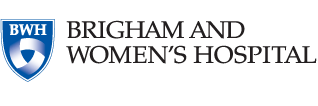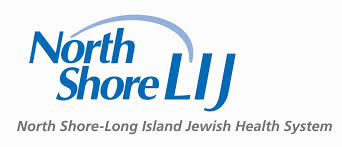Discharge ALERT: Quality Improvement Initiative
| Status: | Archived |
|---|---|
| Conditions: | Cardiology |
| Therapuetic Areas: | Cardiology / Vascular Diseases |
| Healthy: | No |
| Age Range: | Any |
| Updated: | 7/1/2011 |
| Start Date: | April 2009 |
| End Date: | November 2011 |
Multi-centered Discharge Alert to Prevent DVT and PE at Hospital Discharge
Brigham and Women's Hospital will coordinate a Quality Improvement Initiative at other
hospitals that focuses on whether physician notification prior to discharge of high risk VTE
patients will reduce the incidence of VTE after hospital discharge.
BACKGROUND INFORMATION AND RATIONALE FOR THE STUDY
Venous thromboembolism (VTE) is often avoidable in hospitalized patients because proven
prevention strategies have been established for patients at risk (1). North American and
European prophylaxis guidelines have been widely disseminated. However, despite focus on
strategies for the prevention of VTE in hospitalized patients at the time of admission to
the hospital, there has been little focus on prevention of VTE at the time of discharge from
the hospital (2,3).
At Brigham and Women's Hospital, we undertook a previous Quality Improvement Initiative (BWH
protocol # 2000P000328) aimed at increasing the frequency of VTE prophylaxis in high risk
patients. This novel strategy required: 1) devising a risk score that reliably and quickly
identified patients at high risk of VTE, and 2) randomizing high-risk patients without
prophylaxis into an intervention group or control group. The intervention group's
physicians received a single electronic, computerized alert explaining that the patient was
at high risk, was not receiving prophylaxis, and suggesting that prophylaxis be ordered from
a template of available pharmacological and mechanical options. In contrast, the control
group's physicians received no alert (4).
Each of 8 common risk factors was weighted according to a point scale. To be labeled as
"high-risk" for VTE, the point score must equal or exceed 4 points.
There were 2,506 patients in the Quality Improvement Initiative: 1,255 in the intervention
group and 1,251 in the control group. The incidence of symptomatic VTE at 90 days was high:
8.2% in the control group and 4.9% in the intervention group (4).
Currently, an investigator initiated Quality Improvement Initiative (BWH protocol #
2005-P-002527) of human alerts rather than electronic, computerized alerts, has been
undertaken in high risk patients not receiving prophylaxis. Enrollment of 2,500 patients at
25 centers located throughout the United States was completed in November 2007 with a
follow-up rate that exceeded 99%. Analysis of the data is currently being conducted.
Limited research focus has been placed on high-risk VTE subjects in the community, outside
of the hospital setting. Since most VTE prophylaxis has focused upon protection of high-risk
patients at the time of hospital admission, there is a need to focus on VTE prophylaxis
within 48 hours of hospital discharge. It is clear that as preparations are being made for
hospital discharge, many patients remain at high risk for DVT and acute pulmonary embolism.
After discharge, some patients will have an even higher risk than during hospitalization
because of prolonged immobilization and bed rest at home (5).
The Discharge Alert Quality Improvement Initiative will determine whether alerting
physicians about the importance of continued VTE prophylaxis just prior to the time of
planned hospital discharge will lower the incidence of outpatient VTE. This new strategy is
unproven and might not be effective, but this Quality Improvement Initiative should provide
a definitive answer.
We will also implement as part of our Discharge Alert Trial an in-hospital Quality
Improvement Initiative of intensive patient education at Brigham and Women's Hospital to
improve patient adherence to physician-ordered pharmacological venous thromboembolism (VTE)
prophylaxis. We hypothesize that after implementation of this education program, fewer
patients will decline physician-ordered doses of enoxaparin or unfractionated heparin (UFH)
compared with a recent cohort of patients at risk for VTE who did not receive specialized
education about VTE.
METHODOLOGY
Identification of Patients at Risk for Venous Thromboembolism (VTE)
Hospitalized patients awaiting planned discharge within 48 hours will be evaluated with a
previously validated (BWH protocol # 2000P000328) VTE risk profile. The VTE risk profile
will be computed for each patient awaiting discharge using 8 common risk factors. Each risk
factor is weighted according to a point score. To be labeled as "high risk" for VTE, the
point score must equal or exceed 4 points.
Minor (Low) Risk Factors (1 POINT each):
- Advanced Age (> 70 years of age)
- Obesity (BMI > 29, or the presence of the word "obesity" in admission exam notes)
- Bed rest / Immobility (not related to surgery)
- Female Hormone Replacement Therapy or Oral Contraceptives
Intermediate Risk Factor (2 POINTS each):
- Major Surgery (> 60 minutes, during this admission)
Major (High) Risk Factors (3 POINTS each):
- Cancer (active)
- Prior VTE
- Hypercoagulability
Screening for Venous Thromboembolism Prophylaxis
If the cumulative VTE risk score is at least 4, orders are reviewed to detect ongoing
mechanical or pharmacological prophylactic measures. Mechanical prophylactic measures
include graduated compression stockings and intermittent pneumatic compression devices.
Pharmacological prophylactic measures include unfractionated heparin, enoxaparin,
dalteparin, fondaparinux, tinzaparin, and warfarin.
At Brigham and Women's Hospital, we will also identify all new orders for pharmacological
VTE prophylaxis with enoxaparin and UFH using the BWH computerized order entry system as
part of an additional component of the Quality Improvement Initiative. For this component
of the Quality Improvement Initiative, eligibility is defined as having a DVT Risk Score of
3 or higher and having electronically entered physician's orders for appropriate
pharmacologic VTE thromboprophylaxis.
Quality Improvement Intervention
The intervention will take place within 48 hours of planned hospital discharge. If
randomized to the alert, the responsible physician will be notified that: 1) his or her
patient is at high risk for VTE, and 2) VTE prophylaxis should be considered in the
Discharge orders. If randomized to no alert (control patients), the responsible physician
will not be contacted.
At Brigham and Women's Hospital, we will also provide 500 eligible patients in a prospective
cohort with one-on-one education using a scripted dialog to describe the rationale and
importance of pharmacological VTE prophylaxis.
Prophylaxis Guidelines at Discharge
"Consider Venous Thromboembolism prophylaxis at the time of hospital discharge in patients
with congestive heart failure or respiratory disease or prolonged immobility."
"For those without contraindication, consider pharmacological prophylaxis with low-molecular
weight heparin, unfractionated heparin, or fondaparinux."
"For those at high risk of bleeding, consider mechanical prophylaxis with intermittent
pneumatic compression devices or graduated compression stockings."
Follow Up
A 90-day follow-up will be performed for all study patients. If patient outcomes cannot be
determined by medical record review alone, then study representatives may contact the
subject's Primary Care Physician (PCP) for necessary information. IRB approval must be
obtained at each participating hospital prior to any contact with subjects' PCPs.
Data Collection and Study Endpoints
The primary endpoint is clinically diagnosed DVT or PE at 90 days. Safety endpoints include
total mortality and hemorrhagic events at 90 and 30 days, respectively. These are the same
endpoints utilized in our prior Quality Improvement Initiative (BWH protocol # 2000P000328).
Hemorrhagic events will be classified according to the Global Utilization of Streptokinase
and Tissue Plasminogen Activator for Occluded Coronary Arteries (GUSTO) trial criteria.
Bleeding events will be classified as severe or life-threatening if they are intracerebral
or if they result in substantial hemodynamic compromise requiring treatment. Moderate
bleeding is defined by the need for transfusion. Minor events refer to bleeding not
requiring transfusion or causing hemodynamic compromise. We will report rates of "major
bleeding" which will be defined as GUSTO severe/life-threatening or moderate bleeding.
For the additional component of the Quality Improvement Initiative at Brigham and Women's
Hospital, we will also assess improvement of medication adherence with enoxaparin and UFH
following an intensive and individualized patient education program compared with our
recently completed cohort study in which no uniform education program was targeted at VTE
prophylaxis.
Statistical Analysis
The initial sample size (power 80%, two-sided alpha 5%) has been calculated at 2,500
patients based on an estimated 7% rate of the primary end point in the control group, and an
odds ratio of 0.59 for the primary endpoint in intervention group patients. This yields a
sample size requirement of 2,138 patients, plus an estimated 362 patients who will withdraw
from the study.
We will use Wilcoxon rank-sum tests for comparisons in the distributions of continuous
variables between groups, and chi-square tests or Fisher's exact test for comparisons of
categorical variables. The primary analysis is the difference in the Kaplan-Meier estimator
for freedom from VTE at day 90 between intervention and control patients. The log-rank test
will estimate the cumulative probability of the primary endpoint in the intervention and
control groups. We will use the proportional-hazards model for estimation of the relative
hazard of clinical endpoints associated with the physician alert. All p-values reported are
two-sided.
We found this trial at
22
sites
850 Boylston Street
Chestnut Hill, Massachusetts 02467
Chestnut Hill, Massachusetts 02467
1-800-BWH-9999

Brigham & Women's Hospital Women's Health Center At Brigham and Women
Click here to add this to my saved trials
Click here to add this to my saved trials
North Shore University Hospital North Shore-LIJ Health System includes 16 award-winning hospitals and nearly 400...
Click here to add this to my saved trials
Click here to add this to my saved trials
Click here to add this to my saved trials
Click here to add this to my saved trials
Click here to add this to my saved trials
Click here to add this to my saved trials
Click here to add this to my saved trials
University Of Missouri-Columbia The University of Missouri was founded in 1839 in Columbia, Mo., as...
Click here to add this to my saved trials
Click here to add this to my saved trials
Click here to add this to my saved trials
Duke Univ Med Ctr As a world-class academic and health care system, Duke Medicine strives...
Click here to add this to my saved trials
Click here to add this to my saved trials
Click here to add this to my saved trials
Click here to add this to my saved trials
Intermountain Medical Center Intermountain Medical Center is one of the most technologically advanced and patient-friendly...
Click here to add this to my saved trials
Click here to add this to my saved trials
Click here to add this to my saved trials
Click here to add this to my saved trials
Click here to add this to my saved trials
Click here to add this to my saved trials




